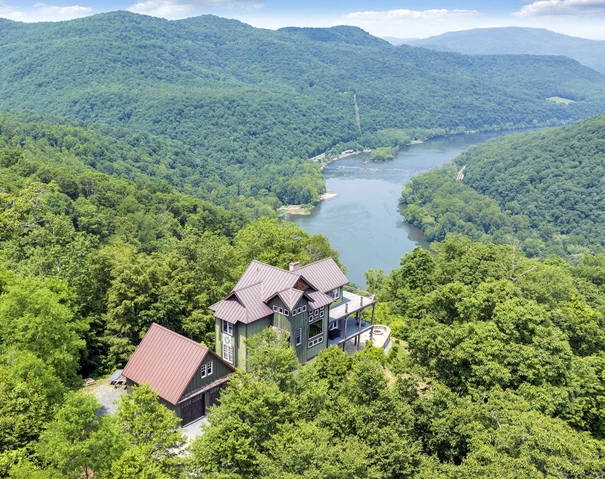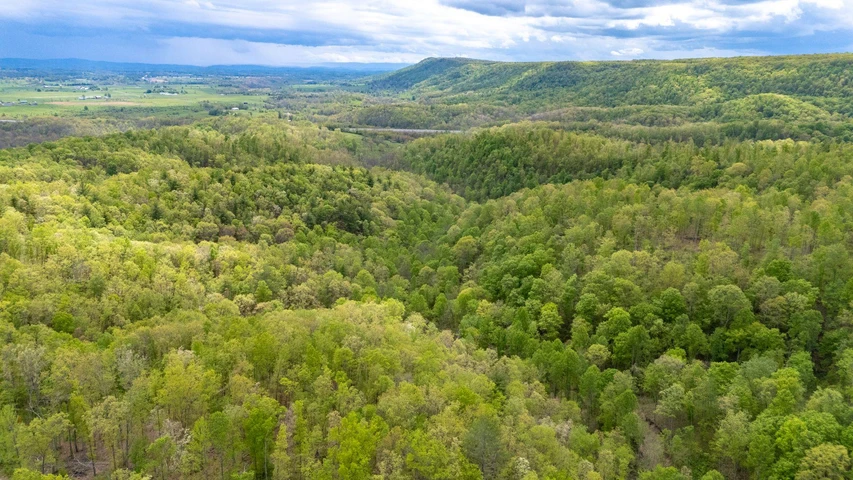
MUDDY CREEK FARM
2484 Spring Valley Rd, Asbury, WV | Lat/Lng: 37.8204, -80.6026
$825,000
179.62 ac.
04/11/2024
ACTIVE
Description
The 179-acre Muddy Creek Farm on Muddy Creek is one of Greenbrier Countys most scenic and secluded farms. Scenic, cultural, and historic values of the Muddy Creek Farm provide not only economic benefits, but also quality of life values.
OVERVIEW
This exceptional farm, just minutes to Lewisburg, has deep, sweet soils that produce excellent cool season grasses or row crops.
Primary economic outputs include beef production grazing on seasonal grasses, but wildlife values are also a major economic consideration for the farm. Environmental values are extensive and provide many essential ecosystem services, such as clean water, wildlife, and recreation opportunities. Scenic, cultural and historic values of the Muddy Creek Farm provide not only economic benefits, but also quality of life values.
HIGHLIGHTS
One of Greenbrier Countys oldest working farms located in the heart of the Blue Sulphur Springs Valley
179 surveyed and deeded acres consists of about 60 acres fields and 120 acres of woodlands
Dynamic and free flowing Muddy Creek drifts through the heart of the farm for about 3/4 miles
Some commercially valuable timber ready for harvest and immediate cash flow
All mineral rights in title will convey
Recent survey is on file showing 179.62 acres
Vintage early 1900s farm house (currently not livable) excellent for repurposing materials containing hand cut-stone, hardwood flooring, tin roof, blown glass, shiplap exterior siding, hand-hewn beams, heavy sawn joist and rafters, old fixtures, stairs, moldings, banisters etc.
2 out houses (one seaters) and several outbuildings in various states of repair
Rich and diverse resident wildlife population
Minutes to historic Lewisburg, jet airport, interstates
Dynamic forest with some old growth trees estimated to be 200-300 years old
Patches of emerging forests and old fields intertwine with the farmland creating an exciting recreational property
Farm and forest roads wind through the property providing superior access
Located near the historic Blue Sulphur Springs
Surrounded by large farms and timber tracts in a nice rural neighborhood
Superior access by state maintained paved roads FedEx, UPS and USPS delivery
Cell phone coverage is excellent in most areas with 4G service
Darkest of skies with little light pollution for star-planet gazing & astrophotography
Sedges, rushes, ferns, songbirds, frogs, turtles, & crawdads populate the wetlands & bogs
Abandoned fields could be cleaned up and a brought back into agricultural production
Located in peaceful Greenbrier County just 20 minutes to Lewisburg, the county seat
Timber species include beautiful oaks, black walnut, poplar, sycamore, maple and hickories
Fur bearing deer, black bear, squirrel, rabbit, bobcat, raccoon, fox, chipmunk, opossum
Winged wildlife eagles, hawks, owls, ravens, turkeys and Neotropical songbirds
Hay & Pasture grasses coupled with the forest produce life-giving Oxygen and are a sequester of carbon dioxide
Spectacular long-range views approaching 40 miles
Perfect for recreational activities including shooting sports, ATV riding, horseback riding, hiking, camping, hunting and nature viewing
Low taxes, low population density
Scenic, cultural, and historic values of the Muddy Creek Farm provide not only economic benefits, but also quality of life values.
LOCATION
Google Coordinates: 37.815643(N), -80.603246(W)
Address: 2484 Spring Valley Road, Asbury, WV 24916
Elevation Range: 1633 ft. to 2000 ft. +/-
MUDDY CREEK
THROUGH THE FARM Delightfully, Muddy Creek flows through the Muddy Creek Farm for nearly one mile. This winding mostly lazy blue-line stream flows year-round. Muddy Creek takes its name when the creeks normal blue-green waters turn light tan after a rain event. The tan color is a result of the fine silt picked up in the rain water runoff and deposited in the creek.
About Silt : Silt is granular material of a size between sand and clay, whose mineral origin is quartz and feldspar. Silt may occur as a soil (often mixed with sand or clay) or as sediment mixed in suspension with water (also known as a suspended load) and soil in a body of water such as Muddy Creek and the downstream Greenbrier River.
20 MILE WINDING JOURNEY Muddy Creek is a tributary of the Greenbrier River and heads up some 4 miles north and east of the Muddy Creek Farm. It is one of Greenbrier Countys most important drainage basins. Muddy Creek begins its journey at Piercys Mill Cave where the waters of Sinking Creek exit the huge underground cave system (some estimate 20 miles coursing underground). The creek drains tens of thousands of acres on its twisting and curving 20-mile long trip through cattle and sheep farms, steep mountain canyons, bottomland forests, wetlands and marshes before ending its trip at Alderson where it enters the Greenbrier River. From there, the Greenbrier flows to the New River, to the Kanawha, onto the Ohio, then the Mississippi and terminating in the Gulf of Mexico. It is said that the waters of Muddy Creek will arrive in the Gulf of Mexico 3 to 4 days after entering the Greenbrier River.
CREEKSIDE WILDLIFE There are many animals that live year round and at other times in the water and around the edges of Muddy Creek, including beavers, otters, minks, raccoons, opossums, blue herons, Canada geese, wood ducks, mallards, king fishers, minnows, native fish, turtles, salamanders, newts, crayfish, muskrats, bull frogs, eagles, owls, hawks and redwing blackbirds.
The miles of edge effect benefit all the resident wildlife. In addition to those listed above, white tail deer, black bear, wild turkey, squirrel, rabbit, bobcat, fox, chipmunk, and many species of songbirds make up the resident wildlife population along the creekside.
Of equal importance, there is the insect and microscopic world including butterflies, dragonflies, water skaters, water beetles, damselflies, hellgrammites, tadpoles and various insect larve.
FOREST/TIMBER RESOURCES
The abundant timber resource, consisting of about 110 acres, has some current timber value as well as value appreciation over the coming decades. With an attractive species mix, adequate stocking levels, and favorable diameter class distribution, the timber amenity represents a strong component of value to the investor.
The Muddy Creek Farms forest resource is composed of quality Appalachian hardwoods and Eastern Red Cedar. This timber resource can provide a great deal of flexibility to the next ownership in terms of potential harvest revenue and could be managed to provide cash flow opportunities to offset holding cost and long-term asset appreciation. Capital Timber Value of the timber and pulpwood has not been determined at this time but is considered substantial.
The forests predominately well-drained upland terrain has led to a resource dominated by hardwood species. Overall, the species composition is highly desirable and favors Appalachian hardwood types, consisting primarily of Black Walnut, Sugar Maple, Poplar/Basswood, Red Oak Group, White Oak/Chestnut Oak, Soft Maple, Hickory, and a host of associated species (ash, cedar, birch, sourwood, black gum, beech).
Forest-wide, most stands are adequately stocked, providing the next ownership with a great deal of flexibility in shaping their own silvicultural legacy. Stem quality forest-wide can be considered excellent.
The propertys timber component has been well managed over the years and consists of stands of differing age classes. The predominant timber stand contains 30-140-year-old stems ranging in size of 10-40 dbh.
Diameters are well represented across the commercial spectrum with a notable mature size class, as well as abundant pole size timber and growing stock. Several Heritage Trees are scattered throughout the forest and old field edges. These ancient trees, some 200-300 years old, have withstood the test of time, weathering ice, wind, lightning strikes and fire.
The forest is healthy and there are no signs of pest infestations of Gypsy Moth. The Emerald Ash Borer, which has inundated the entire Northeast US, is present and the Ash component will significantly decline over the next decade. The Eastern Hemlock species is under siege by the Hemlock Wooly Adelgid and the hemlock will significantly decline over the coming decade. There have been no forest fires in recent memory.
The forest floor is home to several types of mushrooms, medicinal plants, wild ginseng, ferns and cool green mosses.
There are several fruit trees scattered about, some of which were part of the early homestead. Crops of black walnuts and hickory nuts are produced each year from the abundant black walnut and hickory trees scattered about.
Honeybees would do well here, and it would be possible to produce maple syrup from the sugar and red maple trees growing on the property.
FOREST FARMING
The most common crops are medicinal herbs and mushrooms. Other crops that can be produced include shade-loving native ornamentals, moss, fruit, nuts, other food crops, and decorative materials for crafts. These crops are often referred to as special forest products.
Here are some specific examples of crops in each category that are currently being cultivated:
Medicinal herbs: Ginseng, goldenseal, black cohosh, bloodroot, passionflower, and mayapple
Mushrooms: Shiitake and oyster mushrooms
Native ornamentals: Rhododendrons and dogwood
Moss: Log or sheet moss
Fruit: Pawpaws, currants, elderberries, and lowbush blueberries
Nuts: Black walnuts, hazelnuts, hickory nuts, and beechnuts
Other food crops: Ramps (wild leeks), maple syrup, and honey
Plants used for decorative purposes, dyes, and crafts: Galax, princess pine, white oak, pussy willow branches in the spring, holly, bittersweet, and bloodroot and ground pine (Lycopodium)
AGRICULTURAL RESOURCES
The Muddy Creek Farm has been a working farm since the 1800s. The 179 deeded acres consist of about 60 acres of pasture and/or cropland. The balance of the farm contains timberland of v
Details
County: Greenbrier
Zipcode: 24916
Property Type One: Farms
Property Type Two: Recreational Property
Property Type Three: Residential Property
Brokerage: FoxFire Realty
Brokerage Link: www.foxfirenation.com
Apn: 03-23-11
Nearby Listings

















